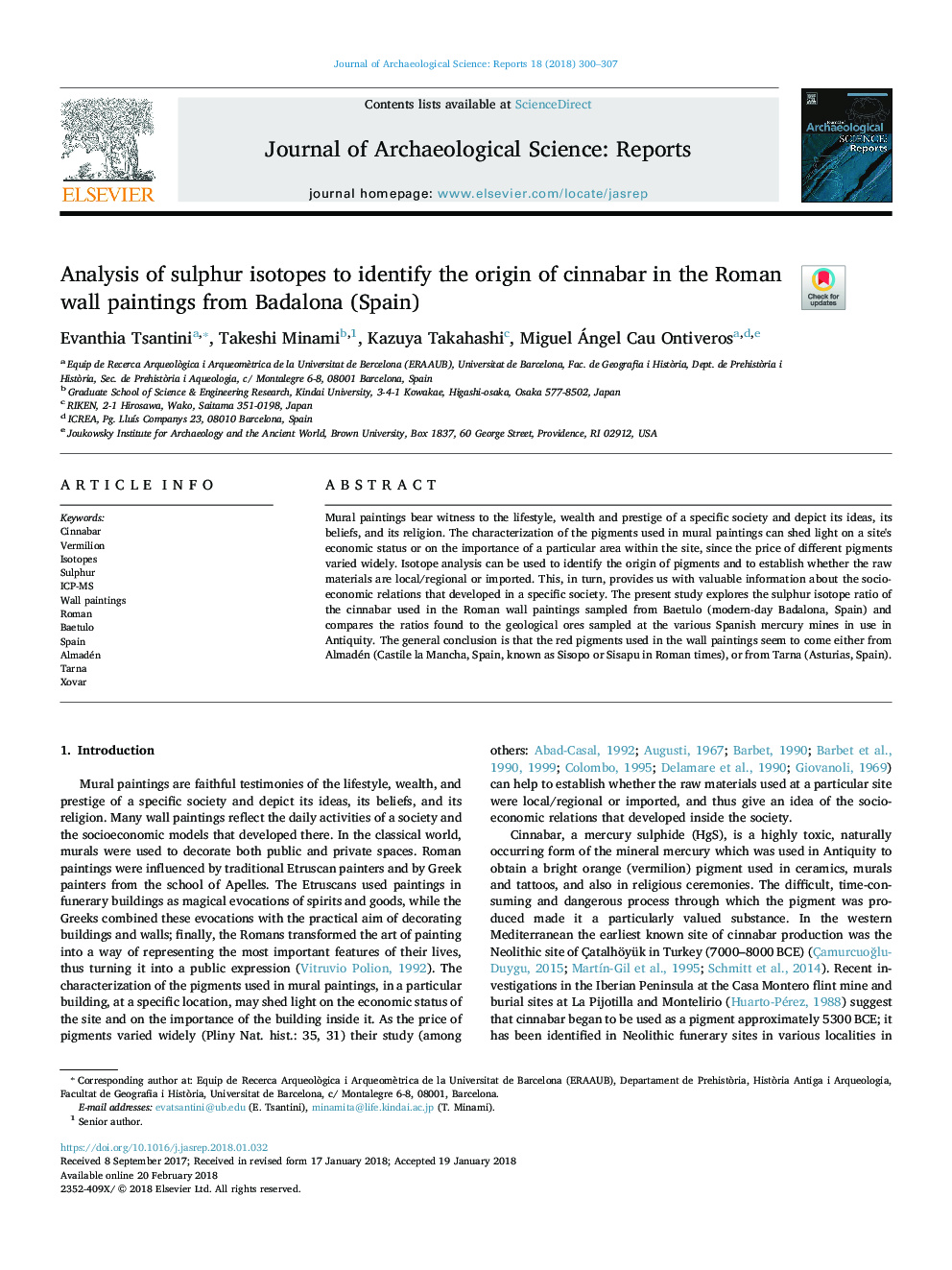| Article ID | Journal | Published Year | Pages | File Type |
|---|---|---|---|---|
| 7444893 | Journal of Archaeological Science: Reports | 2018 | 8 Pages |
Abstract
Mural paintings bear witness to the lifestyle, wealth and prestige of a specific society and depict its ideas, its beliefs, and its religion. The characterization of the pigments used in mural paintings can shed light on a site's economic status or on the importance of a particular area within the site, since the price of different pigments varied widely. Isotope analysis can be used to identify the origin of pigments and to establish whether the raw materials are local/regional or imported. This, in turn, provides us with valuable information about the socioeconomic relations that developed in a specific society. The present study explores the sulphur isotope ratio of the cinnabar used in the Roman wall paintings sampled from Baetulo (modern-day Badalona, Spain) and compares the ratios found to the geological ores sampled at the various Spanish mercury mines in use in Antiquity. The general conclusion is that the red pigments used in the wall paintings seem to come either from Almadén (Castile la Mancha, Spain, known as Sisopo or Sisapu in Roman times), or from Tarna (Asturias, Spain).
Related Topics
Social Sciences and Humanities
Arts and Humanities
History
Authors
Evanthia Tsantini, Takeshi Minami, Kazuya Takahashi, Miguel Ángel Cau Ontiveros,
